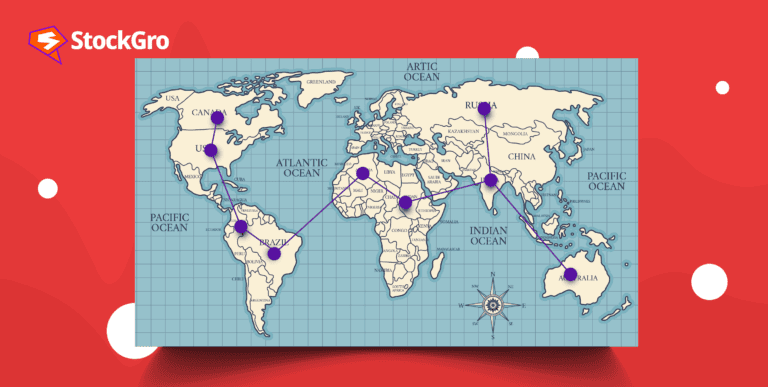
In recent times, the Indian stainless steel industry has faced a significant challenge due to the influx of cheaper Chinese imports. This situation has particularly affected Gujarat, a state that accounts for 80% of the MSMEs in this sector. Between July and September last year, an alarming 30-35% of these medium and small businesses were forced to shut down. To learn more about the impact of these imports and what lies ahead for the MSME steel, keep reading the blog.
Steel sector 2023
2023 has been a pivotal year for the steel sector, with India emerging as the second-largest global producer. The domestic finished steel production reached an impressive 89.711 million tonnes, a 14.3% increase from the previous year.
When it comes to stainless steel, there’s an interesting situation to consider. Despite a healthy growth in consumption, increasing by nearly 6 to 7%, production levels have not seen a corresponding rise. This stagnation in production is largely attributed to heavy imports, especially from China, which have provided stiff competition to local producers.
You may also like: How does the iron and steel industry shape India’s economy?
China’s surplus
China, known as the world’s largest steel producer, is currently grappling with a unique challenge – an excess supply of steel. This situation stems from two main factors: a slow recovery from COVID-19 and a downturn in the real estate sector. As domestic demand weakens, Chinese steelmakers are facing a surplus of metal.
To manage this surplus, China is turning towards exporting its steel at competitive prices, aided by the weakening yuan. This move has made Chinese steel more affordable in the global market. Consequently, in 2023, China is on track to export the most steel it has since 2016.
This surge in exports from China is impacting other steel-producing countries, notably India.
Higher imports from China
In recent times, India has seen a notable uptick in steel imports from China. Data shows that during the first seven months of the fiscal year, starting in April, these imports reached a four-year high. China has emerged as the leading exporter of finished steel to India. The figures are striking – 1.1 million metric tons of steel were shipped to India from China, marking a significant 47.3% increase compared to the previous year.
| Fiscal Year (FY) | Steel Imports from China to India (in million tonnes, mt) |
| 7M FY24 | 1.11 |
| 7M FY23 | 0.75 |
| 7M FY22 | 0.49 |
| 7M FY21 | 0.51 |
| 7M FY20 | 0.88 |
| 7M FY19 | 0.95 |
*”7M” refers to the April-October period of the respective fiscal year.
The types of steel products imported are diverse. The majority include cold-rolled coils or sheets, mainly used in industries like automobiles, consumer goods, and electronics. Other imported products include hot-rolled coils, plates, and pipes. This variety underlines China’s role as a major player in the global steel market.
In the 7M FY24, India’s total finished steel imports stood at 3.5 million metric tons, a 10.1% increase from the previous year and the highest in four years. While China leads, other countries like South Korea also play a significant role, being the second-largest exporter of finished steel to India during the same period.
You may also like: Why Tata Steel’s decline in net profit is a sign of recovery
MSME response to Chinese imports
MSME steel is facing challenges due to the competitive pricing of imported steel. Imported steel from countries like China, South Korea, Vietnam, Japan, and Russia is priced lower than domestic steel, making it a preferred choice for Indian traders. Despite a decrease in domestic steel prices, imported steel remains cheaper, luring buyers with discounts of $30 to $50 per tonne on products like hot-rolled and cold-rolled steel.
The situation is further complicated by the Indian government’s stance on imposing countervailing duties (CVD) on certain steel imports from China. CVDs are tariffs levied on imported goods to offset subsidies provided to producers of these goods in their home countries. The idea is to make sure local businesses can compete fairly with these cheaper imports. Up until the union budget of 2021, imports of steel were subject to CVDs.
Although recommended by trade officials and backed by Indian steel companies, the government is hesitant to impose an 18.95% CVD. This decision aims to protect steel-consuming firms from higher costs, balancing the interests of users and manufacturers. However, this could disadvantage local steel manufacturers.
The influx of Chinese steel into the Indian market has had a significant impact on the country’s MSMEs, particularly in Gujarat’s steel sector. A notable example is the production of utensils made from the 200 series, a type of corrosion-resistant stainless steel. These utensils, predominantly manufactured by MSMEs, have faced viability challenges. Consequently, a majority of these units have shuttered operations, further exemplifying the strain on local production.
According to the stainless steel pipes & tubes industries project report, MSME around 30-35% of this sector had to shut operations due to the pressure of large imports from China. Specifically, in Ahmedabad, 20 out of 80 induction furnace companies have ceased operations, and over 100 re-rollers, essential in producing various steel objects like utensils, have also closed their doors. .
The dilemma for the MSME steel sector is evident. On one hand, the availability of cheaper imported steel benefits consumers and some businesses. On the other hand, it poses a significant challenge to local producers, threatening their survival and leading to shutdowns. This situation reflects the broader dynamics of global trade and its impact on local industries.
Also read: JSW Infrastructure Ltd. IPO: Is it smooth sailing ahead or a stormy sea?
Looking ahead
As we look towards the future, there’s a sense of optimism in the Indian steel industry, particularly in the realm of stainless steel. The government is currently developing a National Stainless Steel Policy, which is in its nascent stages. This policy, expected to be officially launched post-March next year, aims to significantly boost domestic stainless steel production.
One of the key proposed features of this policy is the focus on securing raw materials for MSMEs. The government is considering arrangements with countries rich in these resources to ensure MSMEs can access them at special prices. This move could be a game-changer, providing much-needed relief and support to small and medium enterprises.
Furthermore, the policy aims to increase India’s stainless steel production to around 10 million tonnes initially. This aligns with the global average, where stainless steel accounts for approximately 3% of total steel production. Such a move would not only bolster the domestic industry but also improve India’s standing in the global market.
In addition to policy changes, the industry is exploring new opportunities in sectors like infrastructure. There’s an expected surge in growth in areas such as tunnelling, where stainless steel’s corrosion resistance is highly advantageous due to constant humidity and water exposure. Collaborations with bodies like the Tunnel Association of India signify the industry’s commitment to expanding its applications and market.
Bottomline
Facing intense pressure from cheaper Chinese imports, India’s MSME steel sector stands at a crossroads. The industry’s call for the government to impose CVDs on these imports reflects a crucial step towards safeguarding domestic players. This move, coupled with strategic innovation and market exploration, might make the industry stronger and improve its reputation worldwide.

